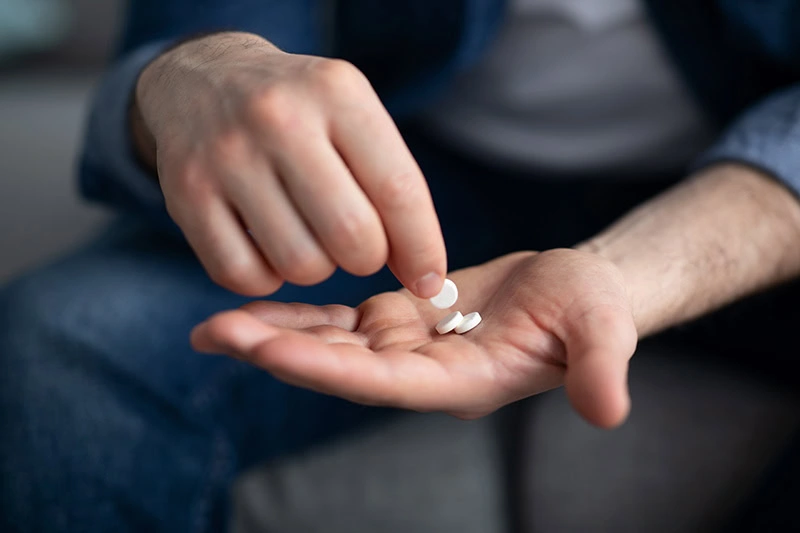Post-traumatic stress disorder (PTSD) affects millions of people who have experienced or witnessed traumatic events. The lingering effects of trauma can disrupt daily life, relationships, and overall well-being. However, with proper therapeutic intervention, healing is possible.
Therapy serves as a cornerstone of PTSD treatment, providing structured support and evidence-based techniques to help individuals reclaim their lives. For those dealing with both PTSD and addiction—a common co-occurrence—specialized treatment centers like Ritual Recovery drug rehab in Asheville, NC, offer comprehensive care that addresses both conditions simultaneously.
Understanding the therapy goals for PTSD during treatment can help individuals know what to expect from treatment and recognize their progress along the way. Each goal is designed to rebuild stability, process difficult emotions, and develop healthy coping mechanisms.
Common Therapy Goals for PTSD Recovery
PTSD therapy is highly individualized, but certain core objectives remain consistent across different treatment approaches. These goals work together to create a comprehensive framework for healing and recovery.
Goal 1: Processing Traumatic Memories
One of the primary objectives in PTSD therapy involves safely processing traumatic memories. Trauma often becomes “stuck” in the mind, causing intrusive thoughts, flashbacks, and even behavioral issues that interfere with daily functioning.1
Therapists use various evidence-based approaches to help clients work through these memories, including:
- Cognitive Processing Therapy (CPT): CPT helps individuals examine and challenge unhelpful thoughts related to their trauma.2
- Eye Movement Desensitization and Reprocessing (EMDR): This therapy uses bilateral stimulation to help the brain process traumatic memories more effectively.3
- Prolonged Exposure Therapy (PE): PE involves gradually exposing clients to their traumatic memories in a safe and controlled environment, allowing them to process and learn to cope with their feelings.
The goal isn’t to forget what happened, but rather to reduce the emotional charge these memories carry. When successfully processed, traumatic memories become integrated into one’s life story without causing overwhelming distress.
Goal 2: Managing Anxiety and Emotional Regulation
PTSD often disrupts the body’s natural stress response system, leading to heightened anxiety, panic attacks, and difficulty managing emotions.4 Therapy focuses on teaching practical skills for emotional regulation and anxiety management.
Mindfulness techniques help individuals stay grounded in the present moment rather than becoming overwhelmed by past trauma or future fears. Deep breathing exercises, progressive muscle relaxation, and grounding techniques provide immediate tools for managing acute anxiety symptoms.
Dialectical Behavior Therapy (DBT) skills are particularly effective for emotional regulation.5 These include distress tolerance techniques that help individuals cope with intense emotions without resorting to harmful behaviors.
Goal 3: Improving Interpersonal Relationships
Trauma can significantly impact relationships, leading to difficulty trusting others, emotional numbing, or social withdrawal. Many individuals with PTSD struggle with intimacy and maintaining healthy connections with family and friends.
Therapy addresses these challenges by helping individuals recognize how trauma affects their relationship patterns. Communication skills training teaches effective ways to express needs and boundaries. Trust-building exercises help individuals gradually feel safer in relationships again.
Group therapy can be particularly beneficial for this goal, providing a safe environment to practice interpersonal skills with others who understand the challenges of PTSD recovery.
Goal 4: Reducing PTSD Symptoms
The ultimate therapeutic goal is reducing the frequency and intensity of PTSD symptoms. This includes addressing the three main symptom clusters:
- Re-experiencing symptoms (flashbacks, nightmares)
- Avoidance behaviors
- Negative changes in mood and thinking
Exposure therapy helps individuals gradually face trauma-related triggers in a controlled environment, reducing avoidance behaviors over time. Cognitive Behavioral Therapy (CBT) addresses negative thought patterns that maintain PTSD symptoms. Sleep hygiene education and relaxation techniques target sleep disturbances, while stress management skills help prevent symptom flare-ups during challenging periods.
All of these methods can are critical in helping achieve these therapy goals for PTSD. The type of therapy that works best for an individual can vary, and it may take time to find the most effective approach.
Managing Co-Occurring Addiction and PTSD
When PTSD occurs alongside substance use disorders, treatment becomes more complex but equally important. Many individuals use alcohol or drugs to self-medicate PTSD symptoms, creating a cycle where trauma and addiction fuel each other.6
Integrated treatment approaches address both conditions simultaneously rather than treating them separately. The goals for dual diagnosis treatment include:
- Achieving Sobriety: Establishing abstinence from substances while providing alternative coping strategies for trauma symptoms. This often requires medical detox and ongoing support to prevent relapse.
- Trauma-Informed Care: All treatment interventions consider the impact of trauma, creating safety and trust within the therapeutic relationship. Staff are trained to recognize trauma responses and avoid re-traumatization.
- Developing Healthy Coping Skills: Teaching alternative ways to manage trauma symptoms without relying on substances. This includes stress management, emotional regulation techniques, and healthy lifestyle changes.
- Building Support Networks: Creating connections with others in recovery and establishing relationships that support long-term sobriety and trauma healing.
Your Path to Healing Through PTSD Therapy
Recovery from PTSD is a journey that requires patience, commitment, and professional support. While the process can feel overwhelming at times, remember that healing is possible with the right treatment approach.
Every small step forward represents progress, even when setbacks occur. The therapeutic goals outlined above provide a roadmap for recovery, but your individual journey may look different from others. What matters most is finding a treatment approach that resonates with your needs and circumstances.
If you’re struggling with PTSD and addiction, comprehensive treatment programs can provide the specialized care you need. Ritual Recovery in Asheville, NC, offers multiple levels of care including Partial Hospitalization Programs (PHP), Intensive Outpatient Programs (IOP), Outpatient treatment, sober living options, and telehealth services specifically designed for dual diagnosis patients. Call us today at 866-530-5836 and take the first step toward treatment can be the beginning of reclaiming your life and finding lasting recovery.
Frequently Asked Questions
How long does PTSD therapy typically take?
The duration of PTSD therapy varies significantly depending on individual factors such as trauma severity, co-occurring conditions, and personal circumstances. Some people may see improvement within a few months, while others may benefit from longer-term treatment spanning several years. Evidence-based treatments like EMDR and CPT often show results within 12-20 sessions, but complex trauma may require extended care.
What types of therapy are most effective for PTSD?
Several evidence-based therapies have proven highly effective for PTSD treatment. Cognitive Processing Therapy (CPT) helps individuals challenge trauma-related thoughts and beliefs. Eye Movement Desensitization and Reprocessing (EMDR) uses bilateral stimulation to process traumatic memories. Prolonged Exposure (PE) therapy gradually helps individuals face trauma-related triggers. Your therapist will recommend the best approach based on your specific needs and preferences.
Can PTSD therapy help if my trauma happened years ago?
Absolutely. PTSD therapy can be effective regardless of when the trauma occurred. Many people don’t seek treatment immediately after experiencing trauma, and some may not develop PTSD symptoms until years later. The brain’s ability to heal and form new neural pathways continues throughout life, making recovery possible at any stage.
Will I have to relive my trauma during therapy?
While processing traumatic memories is often part of PTSD treatment, skilled therapists use techniques designed to minimize distress. You won’t be forced to discuss details you’re not ready to share. Therapists help you develop coping skills first and process memories at a pace that feels manageable. The goal is healing, not re-traumatization.
How do I know if I need specialized treatment for PTSD and addiction?
If you’re using alcohol or drugs to cope with trauma symptoms, or if substance use is interfering with your daily life, you may benefit from dual diagnosis treatment. Signs include increasing tolerance to substances, unsuccessful attempts to quit, continued use despite negative consequences, and worsening PTSD symptoms. Integrated treatment programs address both conditions simultaneously for better outcomes.
What should I look for in a PTSD therapist?
Look for licensed mental health professionals with specialized training in trauma treatment. They should be knowledgeable about evidence-based PTSD therapies and create a safe, non-judgmental environment. Good therapists will explain treatment options, respect your pace, and help you feel comfortable throughout the process. Don’t hesitate to ask about their experience and training in trauma treatment.



